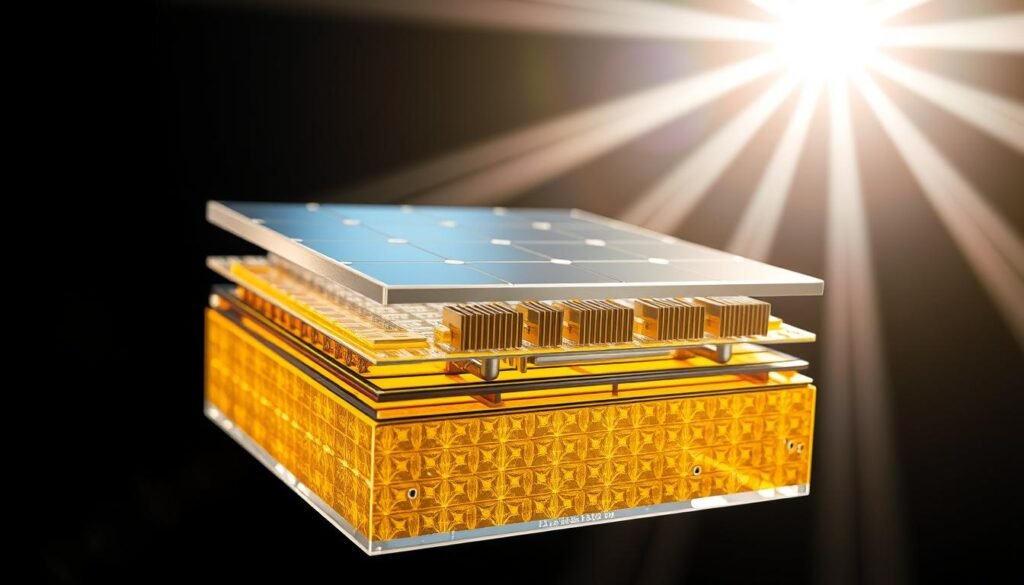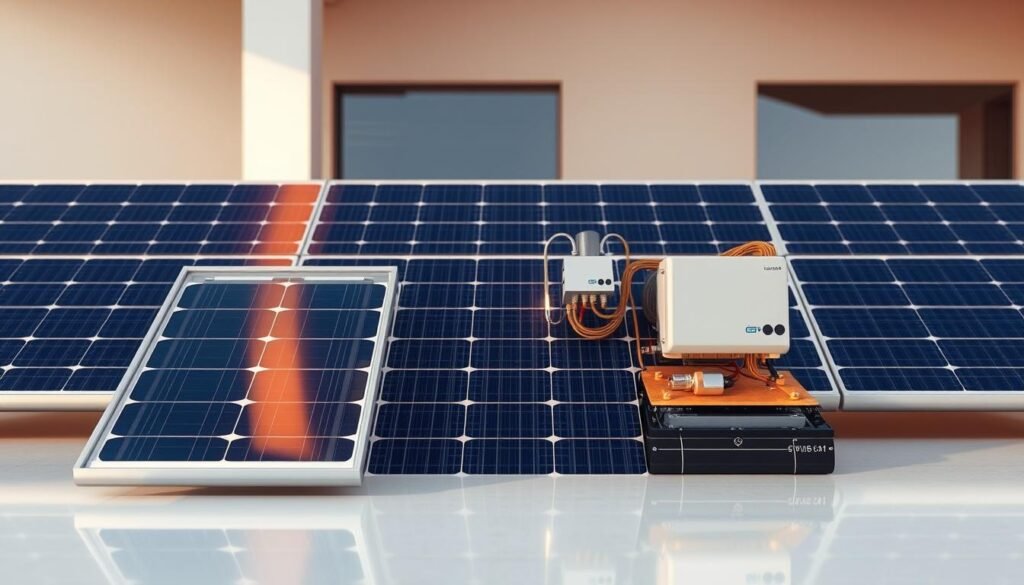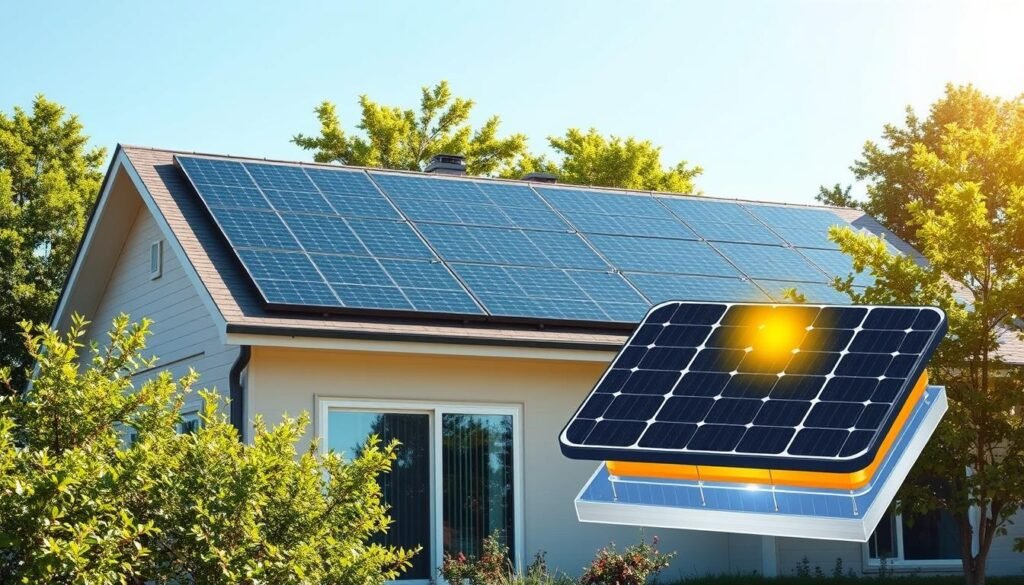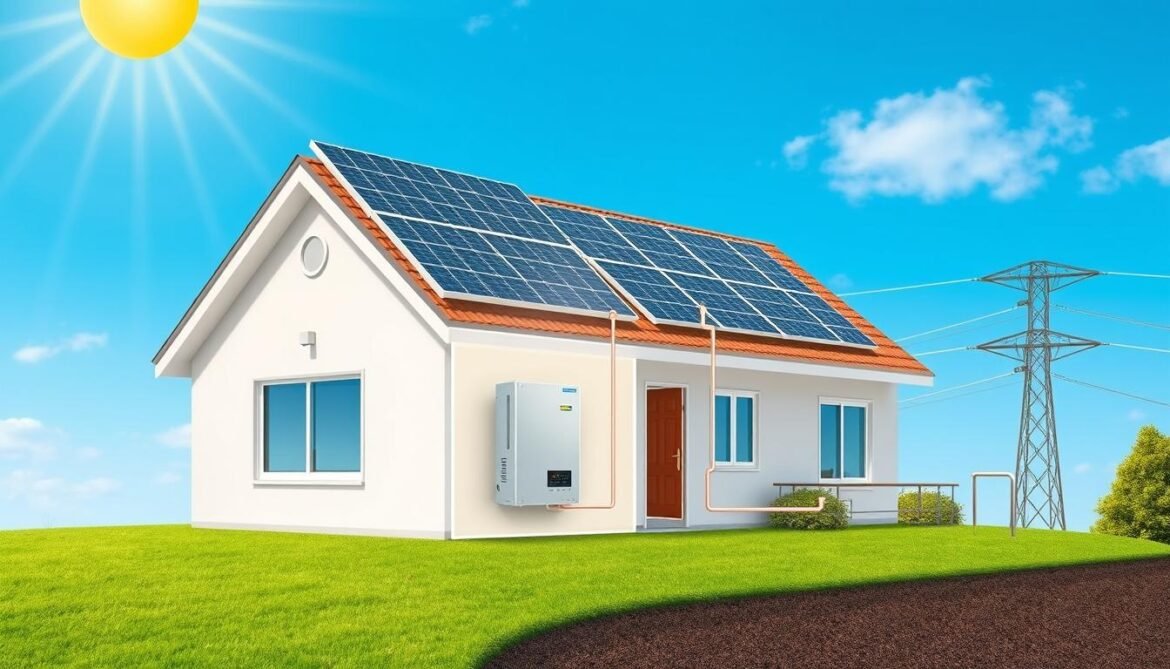Harnessing the sun’s abundant rays for our daily needs is an incredible feat of modern technology. Many homeowners are now turning to this clean, renewable power source to reduce their carbon footprint and lower energy costs.
These systems are composed of special cells that absorb sunlight. A natural phenomenon within these cells then creates an electric charge. This process transforms light directly into usable electricity for your home.
The fundamental principles behind this technology are fascinating yet accessible. You don’t need a technical background to grasp the basics of how solar panels work. Understanding this process empowers you to make smart decisions about your energy future.
This article will guide you through the science, the key components, and what to consider for installation. We’ll explore efficiency factors and the different system options available. Adopting solar energy is an increasingly popular home improvement that offers both environmental and financial rewards.
Introduction to Solar Energy and Its Benefits
The incredible process that creates solar energy begins deep within the sun’s core, where nuclear fusion produces photons that travel to Earth. This natural phenomenon provides a clean, renewable power source with enormous potential.
What is Solar Energy?
Solar energy originates from the sun’s intense core reactions. At temperatures reaching 27 million degrees Fahrenheit, hydrogen atoms collide and fuse into helium. This nuclear fusion releases massive amounts of energy in the form of photons.
Over 500 million tons of hydrogen convert to helium every second. The resulting photons generate the solar energy that reaches our planet. This creates an astonishingly abundant power source.

Overview of Solar Panel Technology
Specialized equipment captures these photons and converts them into usable electricity. The technology focuses on absorbing sunlight rather than heat. This distinguishes it from other energy systems.
Photovoltaic cells within these systems make the sun’s energy accessible for homes and businesses. They represent a virtually limitless renewable resource. This technology reduces dependence on traditional power grids.
Homeowners can leverage this practical solution to generate their own electricity. It contributes to environmental sustainability while providing clean power. The abundance of available sunlight makes this an increasingly attractive option.
Understanding How Solar Panels Work
The transformation of sunlight into household power begins with a remarkable scientific phenomenon discovered over 180 years ago. This process enables semiconductor materials to generate electrical current when exposed to light.

The Photovoltaic Effect Explained
French physicist Edmond Becquerel first observed the photovoltaic effect in 1839. This fundamental principle allows certain materials to produce electricity when sunlight hits them.
Approximately 95% of photovoltaic cells use silicon as their primary material. Manufacturers treat silicon layers with phosphorus and boron to create positive and negative sides.
When photons strike these specially prepared cells, they create an electric field at the junction between layers. This field liberates electrons from their atomic bonds, setting them in motion.
The flowing electrons generate direct current electricity. Metal plates on each side capture this electrical current and transfer it through connecting wires.
The Role of Inverters in Converting DC to AC
The generated direct current travels to a critical component called an inverter. This device transforms DC electricity into alternating current that powers home appliances.
Homeowners can choose between central inverters mounted on exterior walls or microinverters attached to individual panels. Each configuration offers distinct monitoring and performance benefits.
Once converted to alternating current, the electricity flows through your home’s electrical panel. It then distributes clean power to outlets throughout your living space.
Components and Installation of a Solar Panel System
Proper assembly of these renewable energy devices depends on both quality materials and skilled installation. Each component plays a vital role in converting sunlight into usable power for your home.
Key Solar Panel Components and Materials
The heart of each unit consists of photovoltaic cells. These come in monocrystalline and polycrystalline varieties. Monocrystalline cells contain a single silicon crystal, offering higher efficiency.
Multiple protective layers safeguard the delicate cells. Tempered glass provides durability against weather elements. An insulation layer and back sheet prevent heat buildup and moisture damage.
Special coatings enhance performance. Anti-reflective treatments maximize sunlight absorption. Electrical components like bus wires connect individual cells to form a complete circuit.

Step-by-Step Installation Overview
Professional installers begin with a thorough site assessment. They evaluate roof angle, orientation, and potential shading issues. This ensures optimal placement for maximum energy production.
The mounting process involves securing racks to your roof structure. Installers position each module to capture sunlight throughout the day. Proper alignment works effectively even during cloudy conditions.
Electrical connections complete the system setup. Qualified technicians handle wiring and inverter integration. Most residential installations take one to three days depending on system size.
Evaluating Solar Energy Efficiency and System Benefits
The true value of a residential solar system is measured by its long-term efficiency and the tangible benefits it provides. Homeowners gain from both substantial savings and positive environmental contributions.

These systems represent a powerful investment in a sustainable future. The advantages extend well beyond your own home’s electrical panel.
Environmental and Financial Advantages
Adopting this clean power source significantly reduces your carbon footprint. It also decreases reliance on fossil fuel-based plants.
The average homeowner saves between $1,000 and $1,500 annually on electricity costs.
The financial incentives are compelling. With a typical payback period of ten years, the following decades offer nearly free power.
- Systems last 25-40 years with minimal upkeep.
- The federal tax credit covers 30% of installation costs.
- Net metering credits you for excess energy sent to the grid.
Performance in Different Weather Conditions
A common concern is performance during cloudy days. The technology still generates electricity, just at a reduced rate of 10-25%.
Rain can actually be beneficial by cleaning the surfaces. Optimal operating temperatures range from 59 to 95 degrees Fahrenheit.
Efficiency typically falls between 15% and 23%. This ensures consistent energy production throughout the year.
Choosing the Right Solar Panel System for Your Home
Homeowners face important decisions when picking their renewable energy solution. Balancing efficiency, cost, and installation requirements is essential for long-term satisfaction.
Types of Solar Panels: Monocrystalline, Polycrystalline, and Thin-Film
Three main types dominate the residential market. Monocrystalline units offer the highest efficiency but come at a premium price. They work well for smaller roofs where space is limited.
Polycrystalline options provide budget-friendly alternatives with slightly lower performance. Thin-film varieties deliver sleek aesthetics but require more surface area for adequate power generation.

System Setups: Off-Grid, Grid-Tied, and Hybrid Options
Your connection to the utility grid determines the best system type. Off-grid configurations provide complete energy independence. They’re ideal for remote locations without utility access.
Grid-tied systems allow energy exchange with your local utility. Excess electricity can earn credits through net metering programs. Hybrid setups combine grid connection with battery storage for backup power.
For comprehensive guidance on selecting the perfect setup, explore these key tips to choose the right solar. The right combination of panel type and system configuration ensures optimal performance for your specific needs.
Conclusion
The decision to invest in a residential solar system is a powerful step toward a sustainable and cost-effective energy future. Understanding the process empowers homeowners to make confident choices about generating their own clean electricity.
The financial rewards are substantial. You can save thousands of dollars annually while benefiting from a 30% federal tax credit. Over the system’s lifetime, total savings often reach tens of thousands of dollars.
This technology provides reliable power for your home, even on cloudy days. With flexible options like grid-tied or hybrid systems, you can tailor the installation to your specific needs.
Ultimately, adopting solar power is an investment that pays off for your budget and the planet. It secures long-term energy independence and contributes to a cleaner environment.

